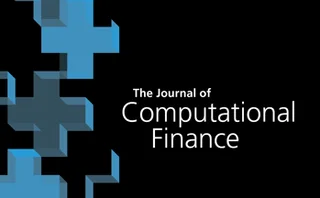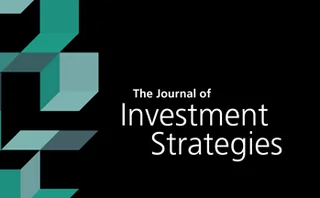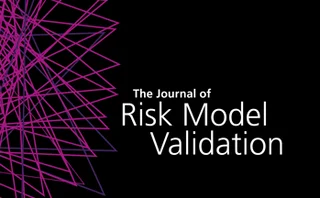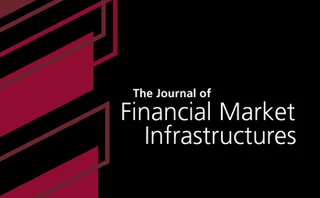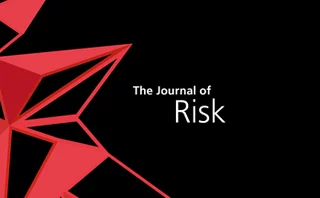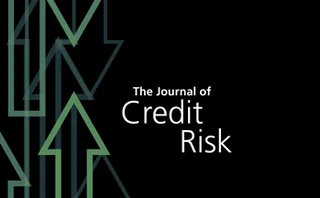Original research
Efficient conservative second-order central-upwind schemes for option-pricing problems
In this paper, the authors propose improvements to the approach of Ramírez-Espinoza and Ehrhardt (2013) for option-pricing PDEs formulated in the conservative form.
Tail-risk mitigation with managed volatility strategies
This paper examines strategy performance from an investment practitioner perspective. Using long-term data from the Standard & Poor’s 500, the authors show that these strategies offer an improvement in risk-adjusted return compared with a buy-and-hold…
Does international stock index arbitrage exist?
This study investigates international stock index arbitrage opportunities between seven blue-chip indexes in Asian, European and US time zones over a twenty-year time horizon.
The extended SSVI volatility surface
This paper extends Gatheral and Jacquier’s surface stochastic volatility-inspired (SSVI) parameterization by making the correlation maturity dependent and obtaining the necessary and sufficient conditions for no calendar-spread arbitrage.
An optimized support vector machine intelligent technique using optimized feature selection methods: evidence from Chinese credit approval data
This paper focuses on feature selection methods for support vector machine (SVM) classifiers, checking their optimality by comparing them with some statistical and baseline methods.
Procyclicality and risk-based access: valuing the embedded credit default swap of employing bilateral credit limits in financial market infrastructures
In light of institutional knowledge, this paper presents the similarities between the survivor-pay component (Tranche 2) of the Canadian large-value transfer system (LVTS) and credit default swap (CDS) contracts.
The implicit constraints of Fundamental Review of the Trading Book profit-and-loss-attribution testing and a possible alternative framework
This paper presents the constraints embedded in the the profit-and-loss-attribution test and explores a possible alternative framework.
Introducing a novel system-of-systems axiomatic risk management technique for production systems
This paper focuses on conceptual and modeling frameworks in an attempt to explore qualitative and quantitative risk management techniques for hierarchical SoS risks, exemplifying the production systems for demonstration.
Maximum likelihood estimation error and operational value-at-risk stability
The aim of this paper is to systematically investigate the stability of operational value-at-risk (OpVaR) models when fitting heavy-tailed distributions to the relatively small sample sizes found in operational loss data.
Electricity market prices for day-ahead ancillary services and energy: Texas
This paper explores determinants of day-ahead market prices for ancillary services and energy in the Electric Reliability Council of Texas (ERCOT).
Parameter variation and the components of natural gas price volatility
This paper models natural gas returns explicitly, allowing for market participants to learn over time and to react differently to present changes in economic variables. This learning and adaptation, and the attendant parameter uncertainty, constitutes…
Yield curve fitting with artificial intelligence: a comparison of standard fitting methods with artificial intelligence algorithms
In this paper, the author expands standard yield curve fitting techniques to artificial intelligence methods.
Incorporating volatility in tolerance intervals for pair-trading strategy and backtesting
This paper incorporates volatility forecasting via the exponentially weighted moving average model into traditional tolerance limits for pair-trading strategies, and illustrates how the proposed method helps uncover arbitrage opportunities via the daily…
On the mathematical modeling of point-in-time and through-the-cycle probability of default estimation/ validation
In this paper, the authors focus on PD estimation and validation. They provide the mathematical modeling for both point-in-time (PIT) and through-the-cycle (TTC) PD estimation, and discuss their relationship and application in our banking system.
Ensemble models in forecasting financial markets
In this paper, the authors study an evolutionary framework for the optimization of various types of neural network structures and parameters.
What kind of payments settle in a real time gross settlement system? The case of Norges Bank’s settlement system (NBO)
A good understanding of the kinds of payments that settle in a central bank real time gross settlement (RTGS) system is useful for both overseers and operators, but no study exists that attempts to systematically categorize all payments settling in an…
Beta hedging: performance measures, momentum weighting and rebalancing effects
In this paper, the authors discuss the various performance measures of beta hedging and offer a new synthetic criterion that accounts for both risk-adjusted returns and losses of trading strategy.
Quantification of model risk in stress testing and scenario analysis
In this paper, the author's aim is to empirically analyze the numerical quantification of model risk, yielding exact buffers in currency amounts (for a given model uncertainty).
Range-based volatility forecasting: an extended conditional autoregressive range model
This paper proposes an extended conditional autoregressive range (EXCARR) model to describe the range-based volatility dynamics of financial assets.
The implications of value-at-risk and short-selling restrictions for portfolio manager performance
This paper provides a framework to analyze the performance of a portfolio manager under a value-at-risk (VaR) constraint, in a Markowitz setup.
Who pays? Who gains? Central counterparty resource provision in the post-Pittsburgh world
In this paper, the authors develop a conceptual framework to examine whether the regulatory changes since the Pittsburgh Summit could be a catalyst for reconsidering the structure of clearing houses.
Fast stochastic forward sensitivities in Monte Carlo simulations using stochastic automatic differentiation (with applications to initial margin valuation adjustments)
In this paper, the author applies stochastic (backward) automatic differentiation to calculate stochastic forward sensitivities.
